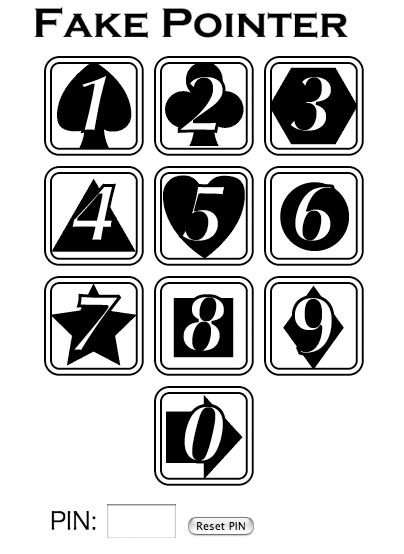Peeping attack in the real world (it is also called "shoulder surfing attack") is one of threats to a user authentication. Although there are some measures against it, we need an another alternative security solution. The reason is that a new attack method emerged and attackers have started to use the method. The attack method is a video capturing. An attacker captures an authentication action (i.e. both a screen and a key operation) as a video record by a miniature video camera. This emerging attack method makes traditional measures insufficient.
I consider that this is a user interface issue, and I propose a "fakePointer" for a solution. The fakePointer has two features to ensure a security against peeping attack with a video camera. One is a unique user interface for a secret input. A major reason to make this attack possible is that a user interface of an authentication forces users to point or type a secret directly. Attackers, theresfore, can identify a secret visually. fakePointer provides a unique user interface to make it hard for them to identify a secret even if they have a video record. The other feature is that the fakePointer randomizes a secret input operation in each authentication. It is also necessary feature for ensuring a security because if an attacker has many video records about a same target's authentication scene, an attacker can extract a secret by statistical analysis.
-
Tetsuji TAKADA:
fakePointer: An Authentication Scheme for Improving Security against Peeping Attacks Using Video Cameras
2nd International Conference on Mobile Ubiquitous Computing, Systems, Services and Technologies(UBICOMM 2008), Oct 2008. -
Tetsuji TAKADA:
fakePointer: a user authentication scheme that makes peeping attack with a video camera hard,
Works in Progress session,
Anuual Computer Security Applications Conference (ACSAC23), Dec 2007.
